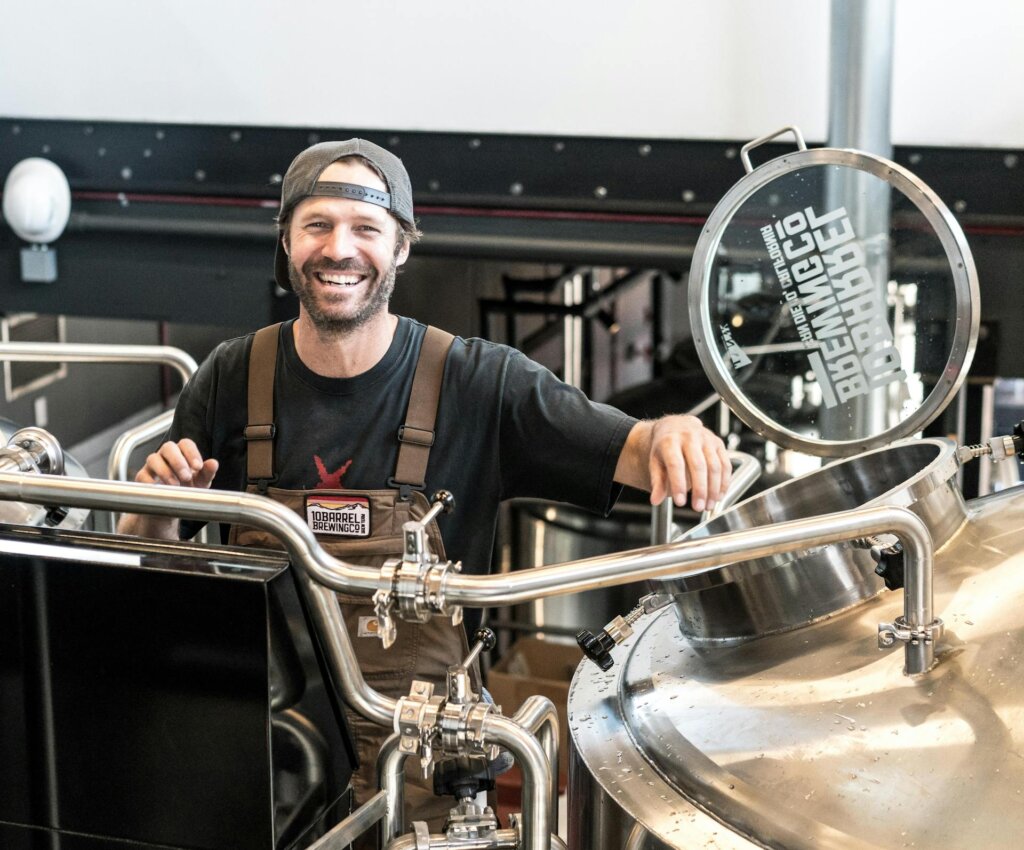How to Rank Locally and Drive Foot Traffic

The Brick-and-Mortar Guide to SEO will help businesses that rely on in-person customers, like contractors, service providers, and small business owners. If your business isn’t ranking on Google, you’re missing out on a steady stream of potential customers.
Local SEO (Search Engine Optimization) helps your business appear in search results when potential customers are looking for services nearby. Unlike general SEO, which targets global search rankings, local SEO focuses on optimizing your presence for customers in your service area.
Here’s a step-by-step guide to improving your local SEO and driving more foot traffic to your business.
The Brick-and-Mortar Guide to SEO: step by step:

1. Optimize Your Google Business Profile (GBP)
Your Google Business Profile (formerly Google My Business) is the foundation of The Brick-and-Mortar Guide to SEO. Local SEO helps you appear in Google Maps, local searches, and the “3-pack” (the top three local businesses Google highlights).
Brick-and-Mortar Guide to SEO Action Steps:
- Claim and verify your business on Google Business Profile
- Ensure your business name, address, and phone number (NAP) are correct and consistent across all platforms
- Choose the right business categories (e.g., “HVAC Contractor” instead of just “Contractor”)
- Add high-quality photos and videos of your services, team, and location
- Write a compelling business description that includes relevant keywords
- Keep your business hours updated, including special holiday hours
- Collect and respond to Google Reviews regularly (more on this below!)
- Follow this link to review Google’s support and see “How to improve your local ranking on Google” directly from Google’s help support.

2. Master Local Keywords for Your Industry
Keywords are the terms potential customers type into Google to find businesses like yours. Local SEO requires geo-targeted keywords (e.g., “roofing contractor in Dallas” instead of just “roofing contractor”).
Brick-and-Mortar Guide to SEO Action Steps:
- Use Google’s Keyword Planner or UberSuggest to find local search terms
- Add keywords naturally to your website, service pages, and blog posts
- Use long-tail keywords like “affordable plumber in Chicago” or “best lawn care near me”
- Include location-based keywords in titles, meta descriptions, and URLs

3. Optimize Your Website for Local Searches
Your website is your digital storefront. A slow, outdated, or confusing website can hurt your rankings and drive customers away.
Brick-and-Mortar Guide to SEO Action Steps:
- Ensure your website is mobile-friendly (over 60% of searches happen on mobile!)
- Improve page speed with tools like Google PageSpeed Insights
- Create a dedicated “Services” page for each offering with unique content
- Add location pages if you serve multiple areas (e.g., “Roofing Services in Austin” and “Roofing Services in San Antonio”)
- Embed a Google Map on your Contact page
- Use schema markup to help Google understand your business details (Check Google’s Structured Data Testing Tool)

4. Build Local Citations & Business Listings
A citation is any online mention of your business’s Name, Address, and Phone Number (NAP). Having consistent citations across directories improves your credibility with Google.
Brick-and-Mortar Guide to SEO Action Steps:
- List your business on Yelp, Angi, HomeAdvisor, Thumbtack, and industry-specific directories
- Ensure your NAP details match exactly across all platforms
- Remove or fix duplicate and outdated listings

5. Get More Customer Reviews (And Respond to Them!)
Reviews are one of the most important local ranking factors. Businesses with more positive reviews rank higher and attract more customers.
Brick-and-Mortar Guide to SEO Action Steps:
- Ask satisfied customers to leave a Google review (offer an incentive if allowed)
- Respond to every review (positive and negative) professionally
- Use an email or text automation to request reviews after service completion
- Encourage Facebook, Yelp, and BBB reviews to diversify your online presence

6. Leverage Social Media for Local Engagement
Google factors in social signals when ranking businesses, and an active Facebook, Instagram, or LinkedIn profile helps build trust.
Brick-and-Mortar Guide to SEO Action Steps:
- Post weekly updates with customer testimonials, behind-the-scenes content, and promotions
- Use local hashtags and tag your location (e.g., #DallasPlumber, #AustinContractor)
- Engage with local businesses and customers by commenting and sharing their content

7. Implement a Simple Content Marketing Strategy
A blog helps your business rank for more keywords and positions you as an industry expert.
Brick-and-Mortar Guide to SEO Action Steps:
- Write monthly blog posts on common customer questions (e.g., “How to Maintain Your AC Unit in Summer”)
- Create how-to guides, case studies, and success stories
- Use internal linking to connect blog posts to your service pages

8. Track Your SEO Progress
SEO is an ongoing process, and tracking your results helps you adjust your strategy.
Brick-and-Mortar Guide to SEO Action Steps:
- Use Google Analytics to monitor website traffic and conversions
- Check Google Search Console for search performance and errors
- Track rankings with tools like SEMrush or Moz

Ready to Take Your Local SEO to the Next Level?
If you’re serious about increasing local visibility and bringing in more customers, CurePay Digital Marketing can help. We specialize in SEO, social media marketing, email campaigns, and paid advertising—so you can focus on running your business while we drive leads to your door.
Contact us today for a free consultation, and let’s get your business ranking higher!
